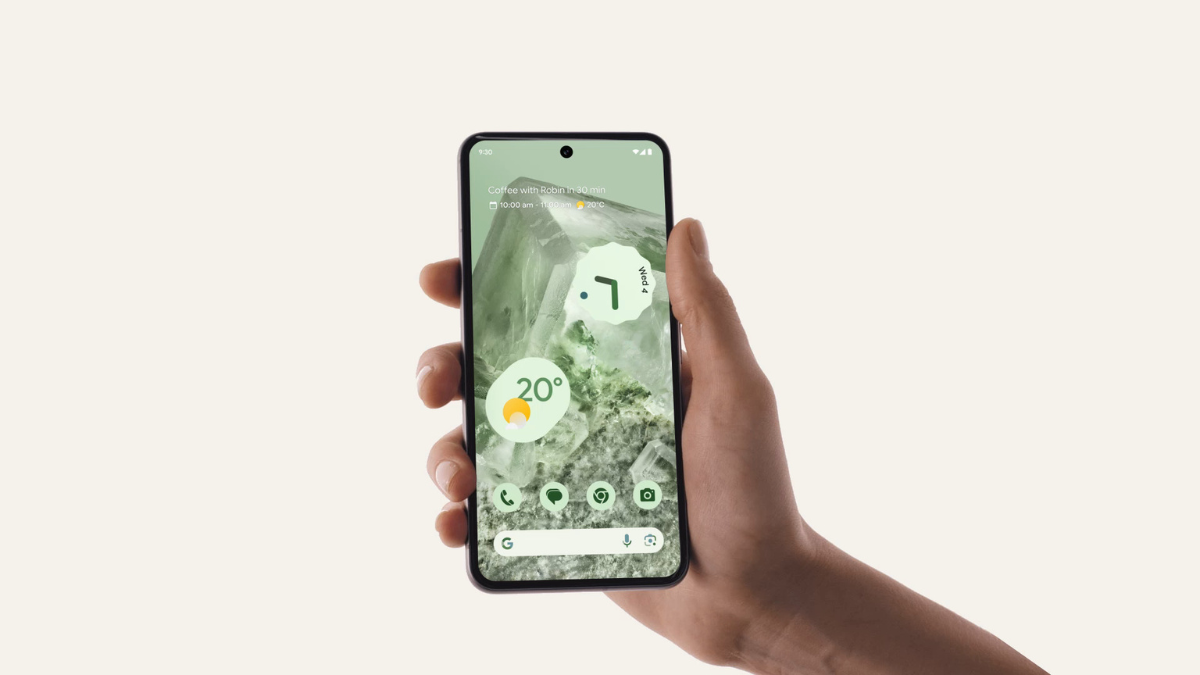What to know
- Google’s new Pixel 8 and Pixel 8 Pro come with two different display technologies – Actua Display and Super Actual Display, respectively.
- Actua Display is essentially an OLED display that can achieve up to 2,000 nits of peak brightness and can switch to high refresh rates of up to 120Hz.
- Super Actua Display instead uses an LTPO display that offers variable refresh rates between 1Hz and 120 Hz and its brightness can get even higher at up to 2,400 nits.
- Read further to learn more about what’s different in the Actua and Super Actua displays.
What is Actua Display?
![]()
The Actua Display is the display technology that Google has incorporated into the Pixel 8 smartphone. On paper, it’s essentially an OLED display that offers variable refresh rates that can be switched dynamically between 60Hz and 120Hz.
Google says the Actua Display is designed to deliver real-world clarity; the key point here is the brightness. Relative to other OLED panels, the Actua Display will be significantly brighter, achieving up to 1,400 nits when viewing HDR content and up to 2,000 nits of peak brightness. In comparison, Pixel 8’s Actua Display is 42% brighter than Pixel 7’s display whose peak brightness maxed out at 1400 nits.
Related: Difference Between Super Actua Display and Super AMOLED Display
What is Super Actua Display?
![]()
Super Actua is the display panel that’s been implemented on the Pixel 8 Pro smartphone. Unlike the Actua display, Super Actua uses an LTPO display which can be switched to lower refresh rates. While both Actua and Super Actua can attain high refresh rates of up to 120Hz, only the latter will be able to switch to 1Hz refresh rate.
As we highlighted with the Actua display above, the key takeaway for the Super Actua display is the brightness levels it can achieve. Although the Actua display itself can be quite bright, Super Actua offers at least 1,600 nits on HDR and up to 2,400 nits of peak brightness. In contrast, the iPhone 15 Pro only offers up to 2,000 bits of peak brightness, so the Super Actua display makes the Pixel 8 Pro the brightest-lit phone under direct sunlight.
Related: Google Pixel Watch 2 Sensors Explained: 2 New Sensors and The Improved Heart Sensor
Actua vs. Super Actua display: What’s different?
![]()
The Actua and Super Actua displays on the new Pixel 8 and Pixel 8 Pro are two different display technologies offering a handful of varied features.
| Actua Display | Super Actua Display |
| Pixel 8’s Actua Display is essentially an OLED display made of a low-temperature polycrystalline silicon (LTPS) backplane. | Pixel 8 Pro’s Super Actua Display has an LTPO display consisting of LTPS and indium gallium zinc oxide (IGZO). |
| Being an OLED panel, the Actua Display requires additional components to vary refresh rates. | The LTPO panel on the Super Actua Display can switch between multiple refresh rates on its own. |
| Actua Display can only switch to higher refresh rates; between 60Hz and 120 Hz. | Super Actua Display can achieve both lower and higher refresh rates; between 1Hz and 120Hz. |
| Since the lowest available refresh rate is set to 60Hz, Actua display may consume more battery resources than Super Actua. | By offering a low refresh rate of 1Hz, Super Actua (LTPO) display consumes less battery, providing longer battery life. |
| Actua Display offers a brightness of up to 1,400 nits when viewing HDR content and up to 2,000 nits of peak brightness. | Super Actua display can achieve brightness levels of up to 1,600 nits of brightness for HDR content and up to 2,400 nits of peak brightness. |
That’s all you need to about the difference between the Actua display and Super Actua display.
Related:


![Solution For Quiz - Where Did the Dragon Hall Deal a Major Blow to the Khitan Navy [Where Winds Meet]](/content/images/2026/01/1-15.png)










Discussion